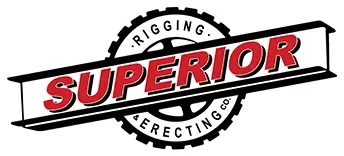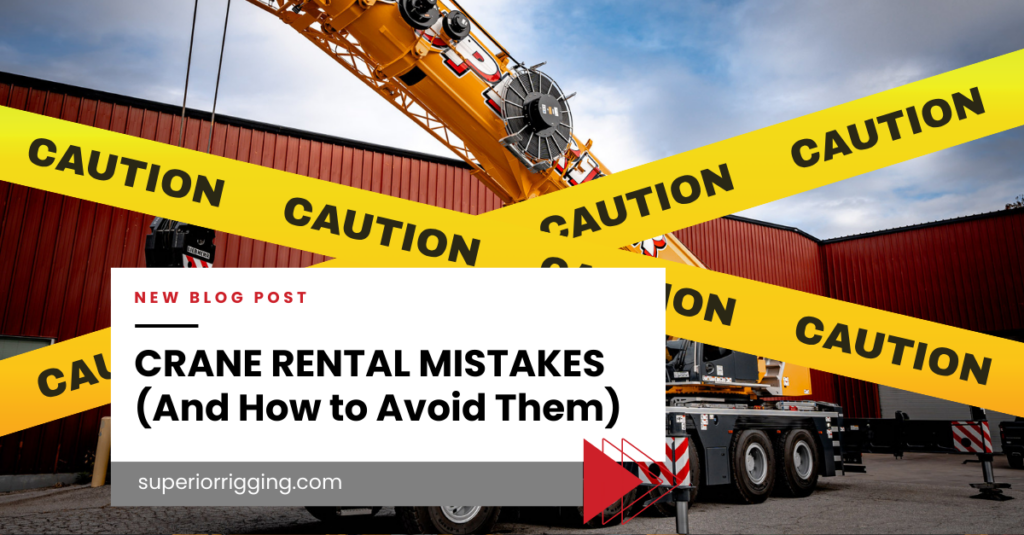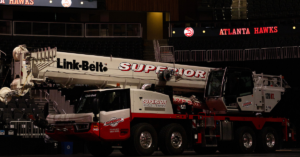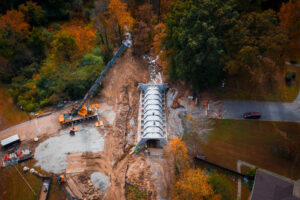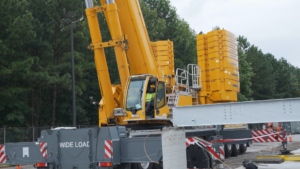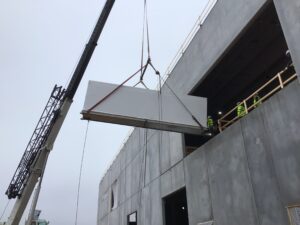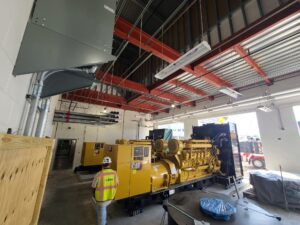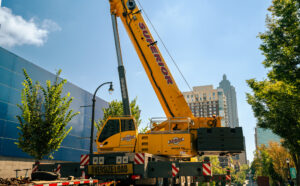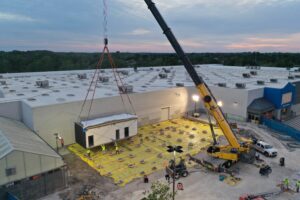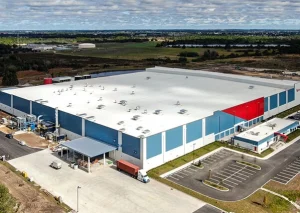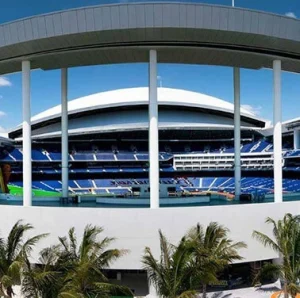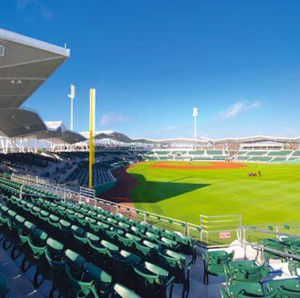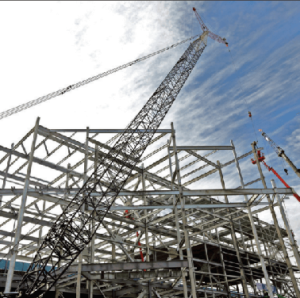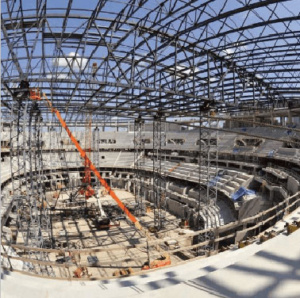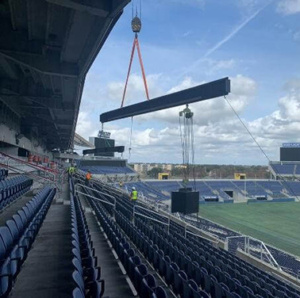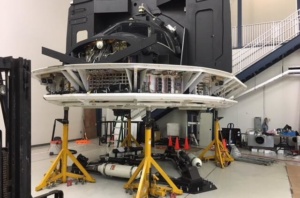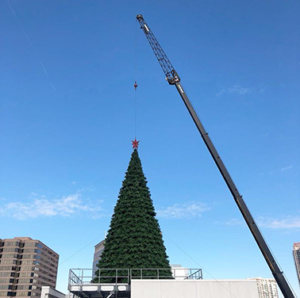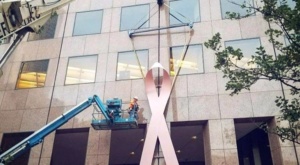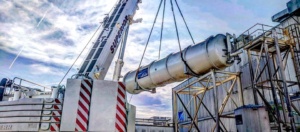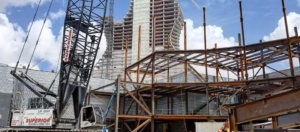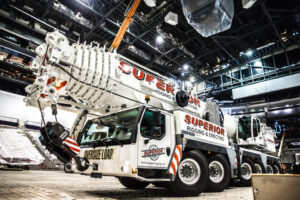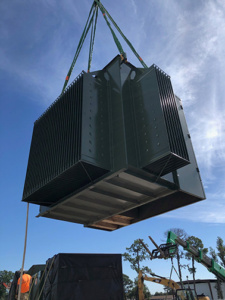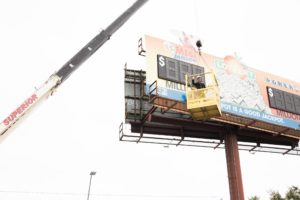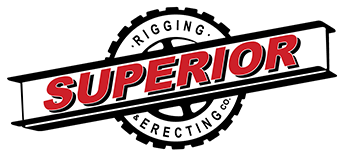There are hundreds of things that can go wrong on a job site, especially when heavy machinery like cranes are involved. Knowing what these mistakes are and how to avoid them before you rent a crane is integral to saving yourself the costs of potential errors.
Choosing the wrong type of crane, underestimating the site conditions, and not using a trusted rental company with experienced operators can derail your timeline, blow your budget, or worse, endanger your crew.
In this blog, we’ll dive deeper into common mistakes and explain how to avoid them so your lift goes off without a hitch.
Choosing the Wrong Crane
Arguably the most important and primary step of planning a lift is choosing the right crane. To do this, it’s important to work with experts that understand the load capacity you require, the radius the crane will have to operate in, the surface the crane will be on, and the clearance the crane will have between its boom and “ceiling”. Overloading a crane can lead to a number of issues, such as tipping and structural damage to the crane. Both of these errors can lead to massive delays and/or injury on the job site.
To choose the right type of crane to rent, you need to understand your load requirements and where the load is being moved to. You might have accounted for the weight of your load, but didn’t account for how a longer boom and lifting at a greater radius would reduce your maximum load capacity. Each crane has its own specified load chart that accounts for each configuration the crane can permissibly be in. Understanding and knowing how to interpret this load chart is necessary before you go through with crane rental. It’s also important to understand that the load chart accounts for 85% of a crane’s total capacity. Anything past 85% will result in the issues listed above.
While the load chart capacity must not be exceeded, another thing to be knowledgeable of is how the structural limitations of a crane can affect its maximum capacity. This is important to keep in mind as a case of “overloading” can exceed the structural capacity of the crane. This can be happening while the load and crane both appear secure.
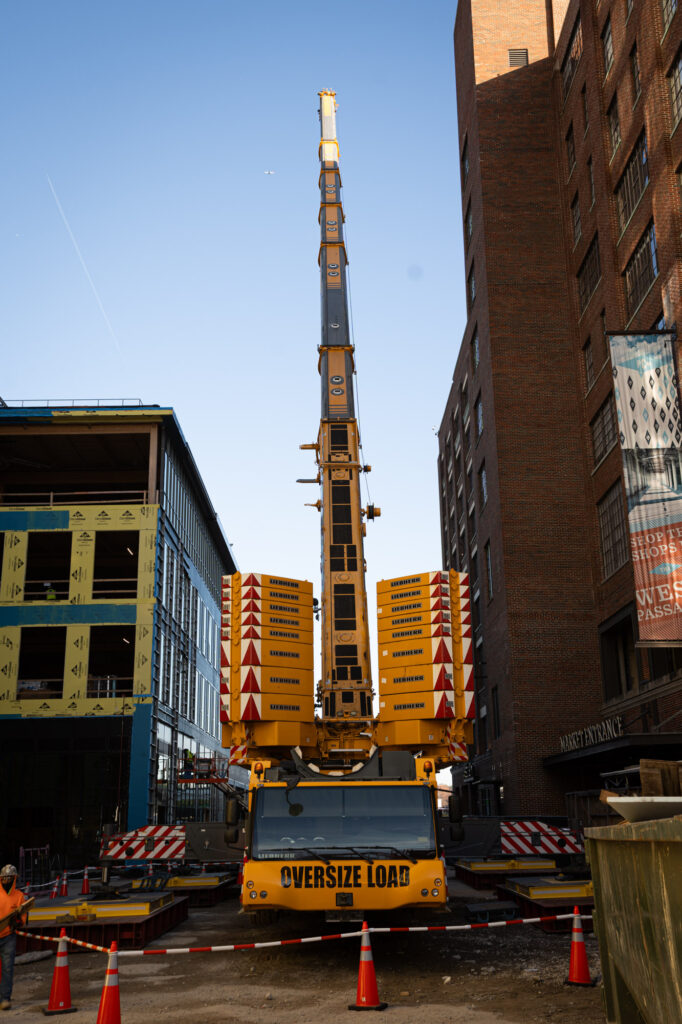
Damaging a crane’s structural integrity might not cause it to fail on the job site immediately, but if you don’t catch and fix the issue, it will fail later, and likely when you need it most.
Overload the crane, and you risk damaging both the machine and your project timeline.
Being knowledgeable about how the weight of a lift and its final destination impact the capacity of the crane rental can help avoid disasters before they happen. At Superior, an expert evaluates the job site and determines what needs to be done to choose the appropriate crane for your lift.
Failure to Understand Site Conditions
Once you’ve selected the right crane, the next crucial step is evaluating the site it will operate on. Improperly evaluating your site conditions can lead to costly errors. One of the major things to consider is the type of surface on which the crane you rented will be operating on. Keep in mind that the load chart capacities are rated for when the crane is operating on a firm, supported surface.
Mobile cranes with outriggers are able to make the crane level, therefore, they’re allowed to have a greater discrepancy in the existing surface’s levelness. Crawler Cranes lack outriggers, so ensuring that they are operating on a level surface within 1% of the grade is vitally important. Failure to do so can lead to tipping and stress the structural integrity of the crane.
Another condition to consider when planning a lift is the actual weight of the crane and if it can be supported. Consider a job taking place indoors of a new mega-sculpture being placed into a museum. What is the ground/floor made of? A material that’s prone to cracking under intense weight, such as marble, needs to be addressed. The use of mats to evenly distribute the weight lessens the stress that surface will be under.
If the crane must operate on an elevated surface, like a building’s first floor with a basement beneath, an engineer must get involved to evaluate the structure’s load-bearing capacity. The experts at Superior are trained to determine ground bearing pressure when evaluating the site. Working with knowledgeable experts is a surefire way to minimize the risk that comes with an improperly evaluated site.
Not Choosing a Reliable Rental Company
Even the best equipment won’t matter if the company behind it isn’t reliable. Before you choose a crane rental company to go through for your lifting needs, you need to properly vet them. Are they known for consistently leading safe and efficient lifts? Knowing this before you go through with crane rental can save you a ton of headache from dealing with an unprofessional and inefficient company. A company that hasn’t demonstrated excellence in safety will put your job site and the people working it at risk.
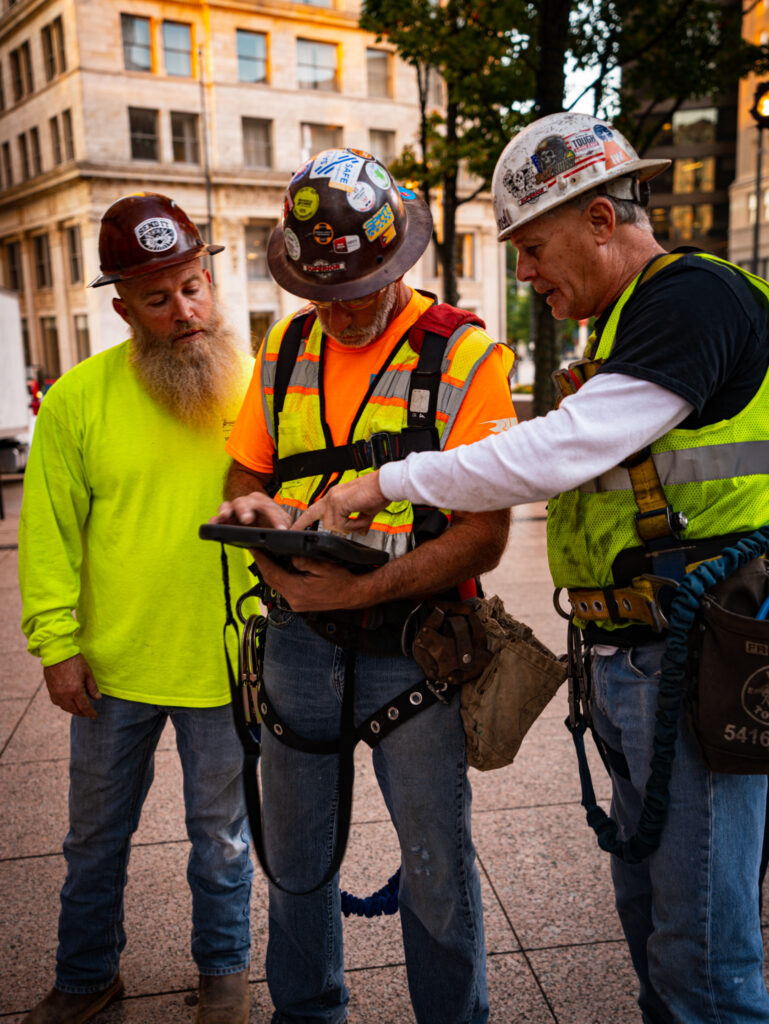
Awards that the company has won and a company’s EMR are some of the key indicators that a business is reliable. For instance, the industry standard for an EMR is 1.0, Superior Rigging currently has an EMR of 0.86, a higher EMR means the company has been more prone to accidents in the past and vice versa.
Awards given to Superior in the past include “Safest Subcontractor” from the CDC, “Outstanding Safety and Performance” from the Georgia World Congress Center, and the SC&RA’s (Specialized Carriers and Riggers Association) “Outstanding Performance and Safety” Award.
Don’t just hope your crane company is reliable, make sure of it. Partner with a team whose reputation is backed by results
Having Inexperienced Operators
While knowing that you’re choosing the right company is essential before a lift, knowing that they’re supplying competent and appropriately certified operators is just as important. The NCCCO (The National Commission for the Certification of Crane Operators) certification is the top certification that crane operators can acquire. The certification an operator receives can also be specific to the type of crane that they will be operating. Some companies, such as Superior Rigging & Erecting Co. ensure that all of their operators are NCCCO certified.
Crane operators handle a massive liability. A mistake on their part can cost millions of dollars in damages. An experienced and certified operator assesses the risks of the job and ensures that these will be minimized as much as possible. The risk to the public and fellow workers is too great to not have a trusted, experienced, and certified operator.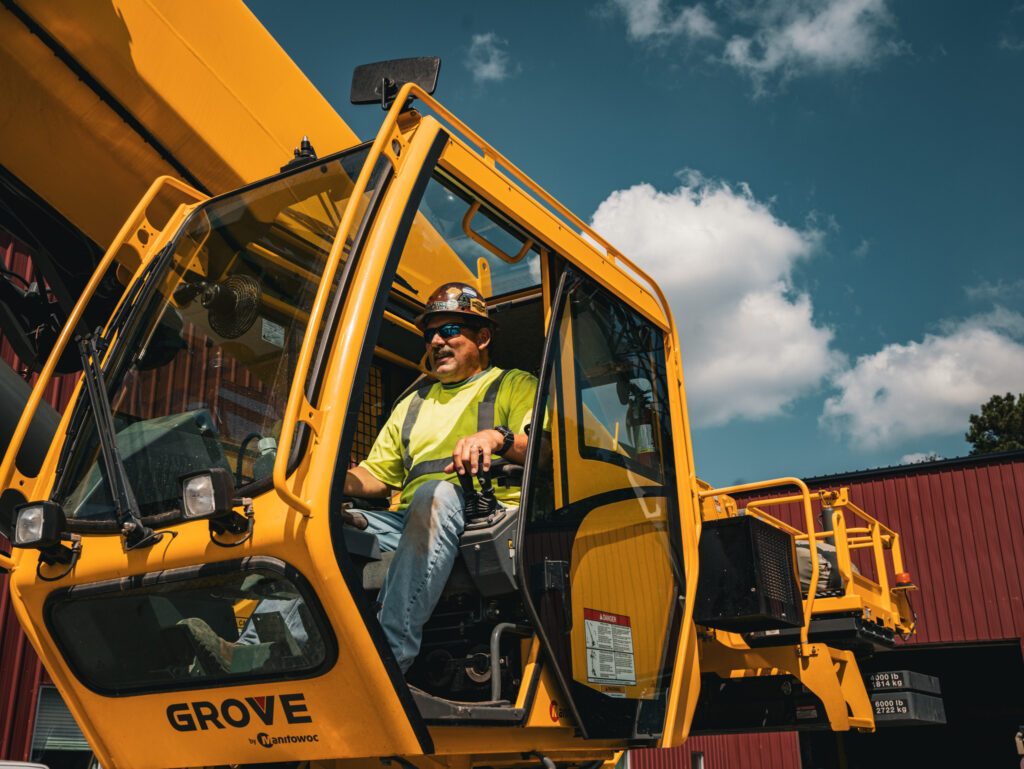
Having Inexperienced Riggers
Experienced and certified crane operators can only get you so far if the riggers are not held to the same standard. While the crane operator is behind the controls of the crane, the rigger is on the ground or roof ensuring that the load is secured properly with appropriate rigging. Riggers have to understand the physics involved with moving heavy loads to avoid any problems, such as a sling snapping, or the load blowing in the wind because no one used a tag line.
Like crane operators, riggers need to earn a qualification in order to be trusted to do their job. A rigger earns this qualification through a test at their local union hall and it stays valid through the rest of their career. At Superior, our riggers get retested to ensure their knowledge is at the highest level, only riggers who earn this qualification again get endorsed by Superior. A rigger has to take many aspects into account, such as the “sling angle” (find out about sling angles in our blog post “What Does A Rigger Do?”) that can stress the rigging or lead to a lower capacity than the team originally calculated. A knowledgeable and certified rigger is just as important as their operator counterpart.
Conclusion
Cranes are a powerful tool, and one that must be treated with respect. Understanding the complexities involved in planning out the crane rental process can help mitigate these mistakes. Avoiding them by staying knowledgeable will save your team, time, money, and most importantly, keep the employees and your job site safe.
Careful planning and communication are the keys to success but so is partnering with the right team. At Superior Rigging, we bring decades of experience, certified professionals, and a commitment to safety and reliability to every job. Don’t leave your next lift to chance, contact Superior Rigging today and let us help you make the tough look easy.
This article has been reviewed by industry expert Darrell Clayborne, Superior Rigging and Erecting Co. Crane Operations Manager, on 5/2/2025.
